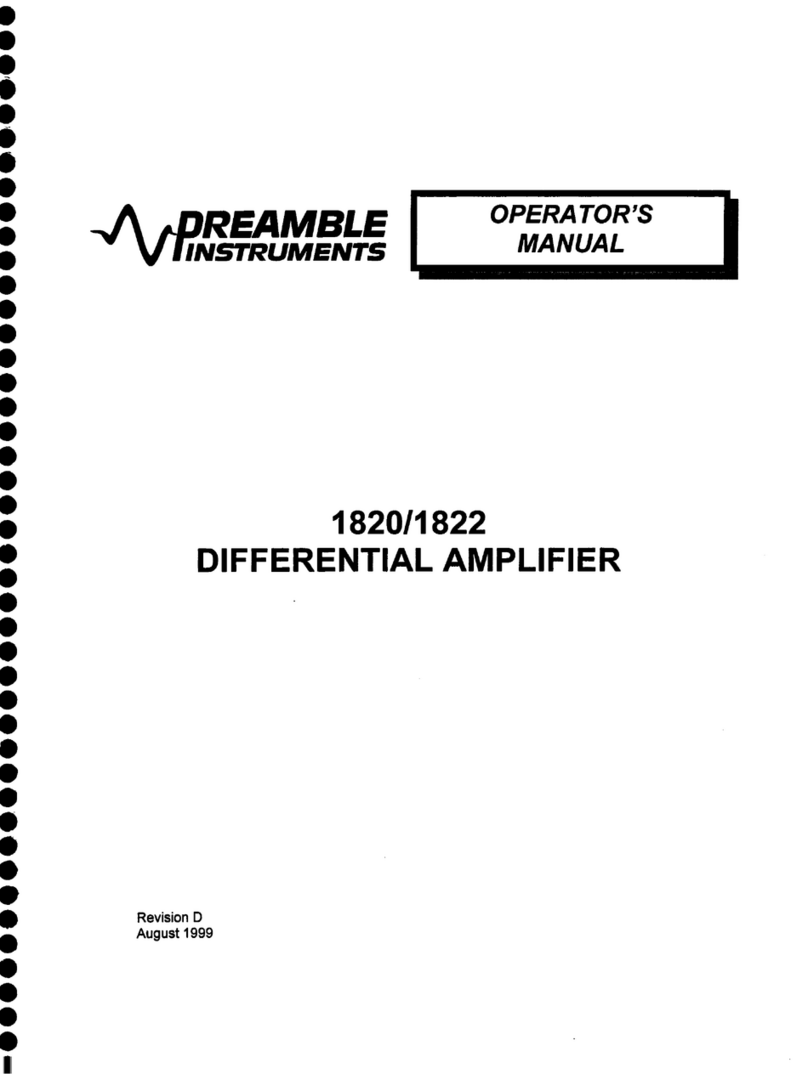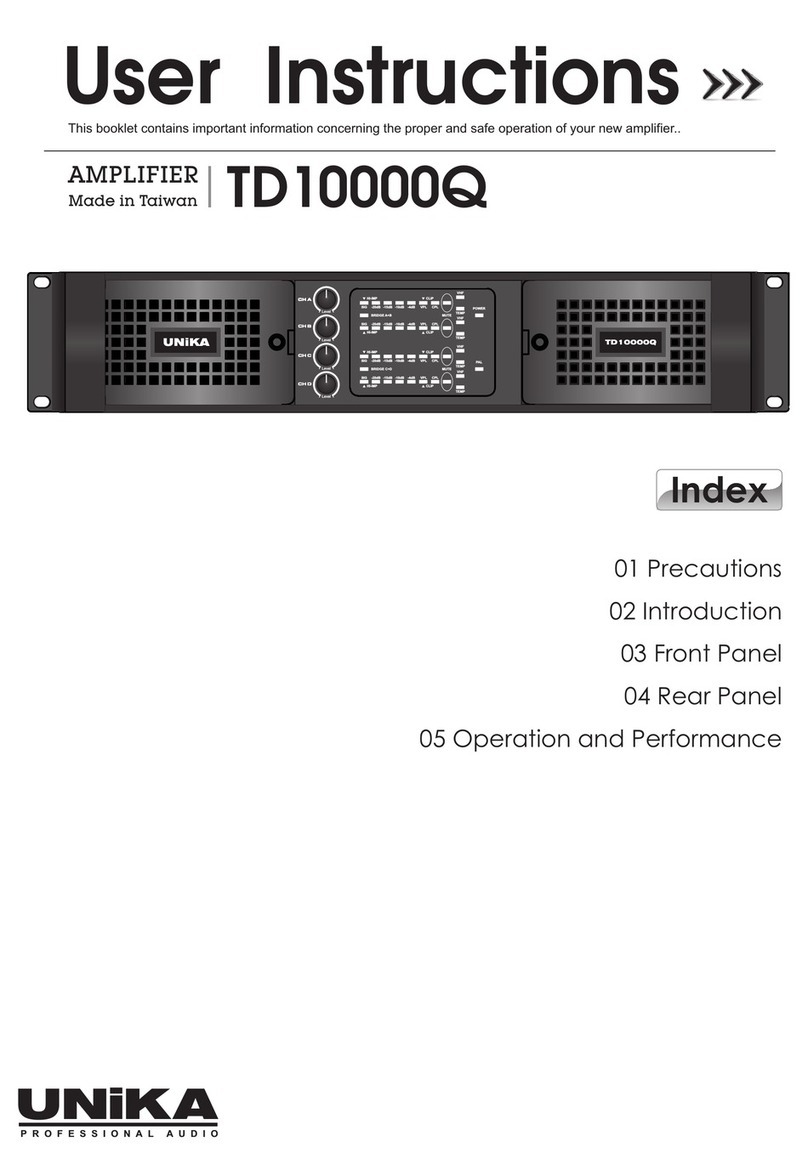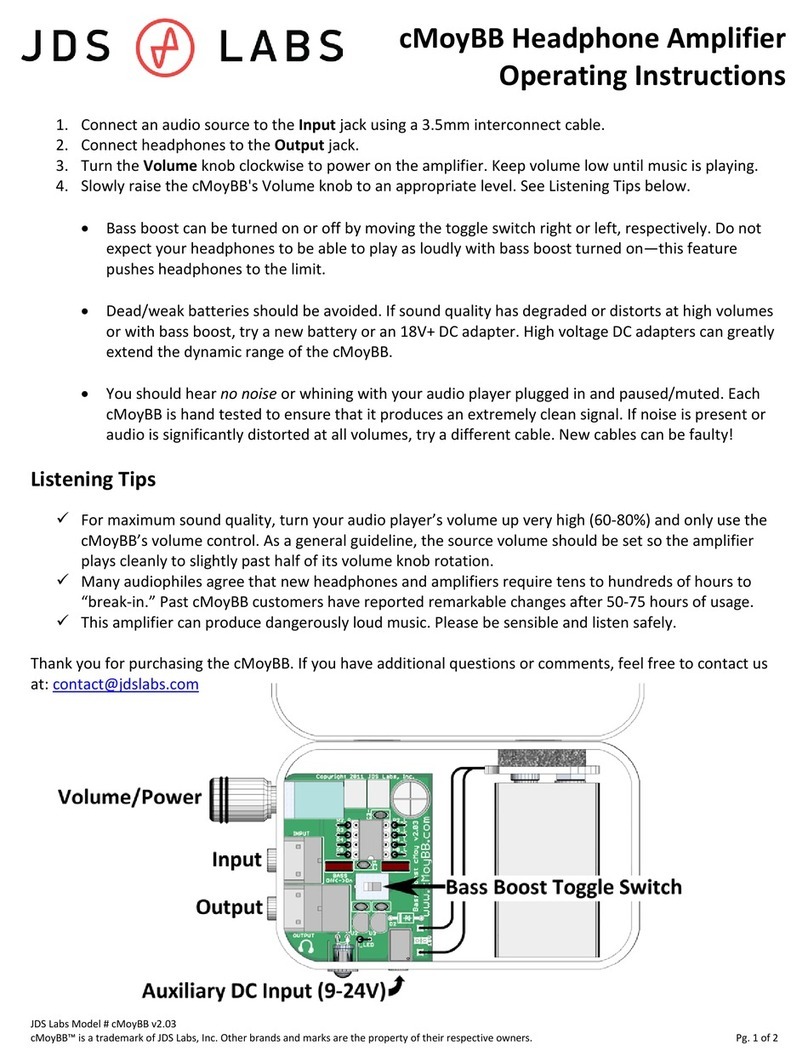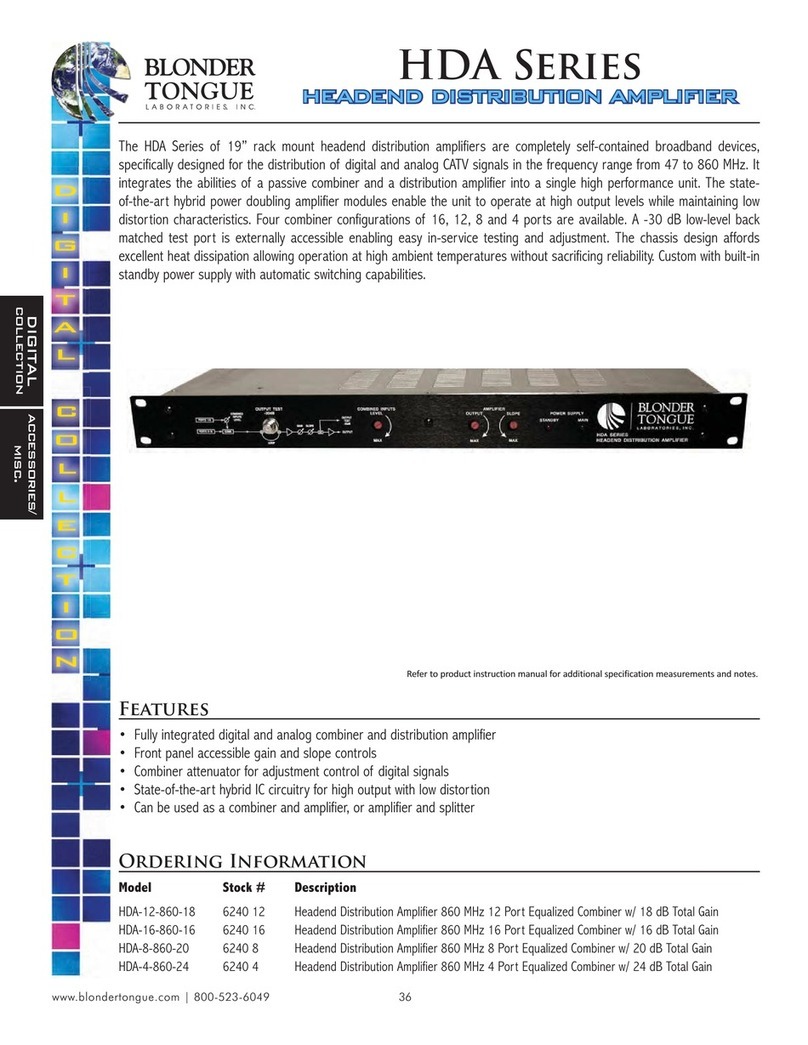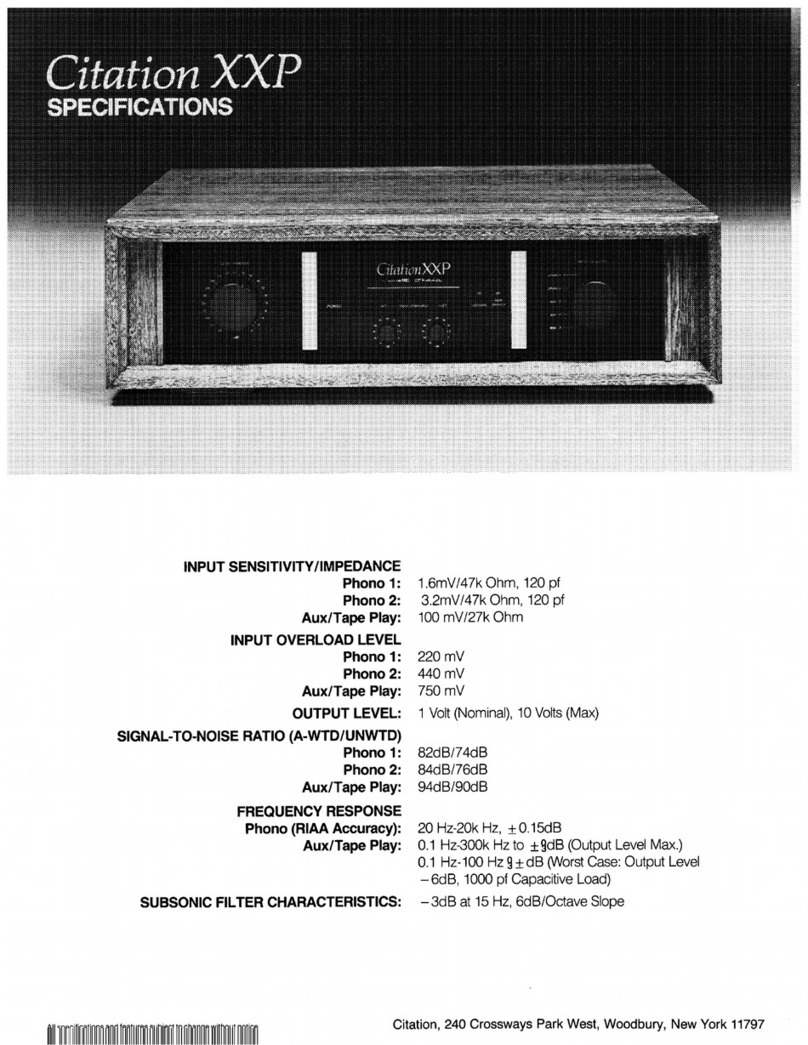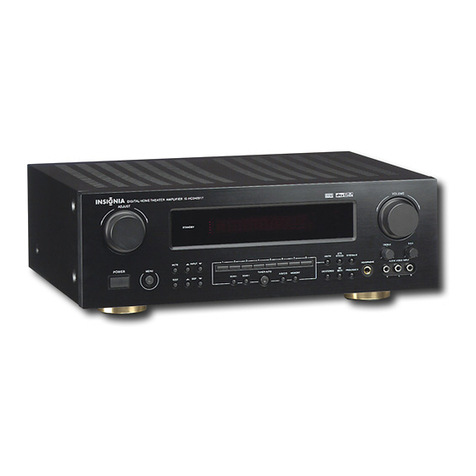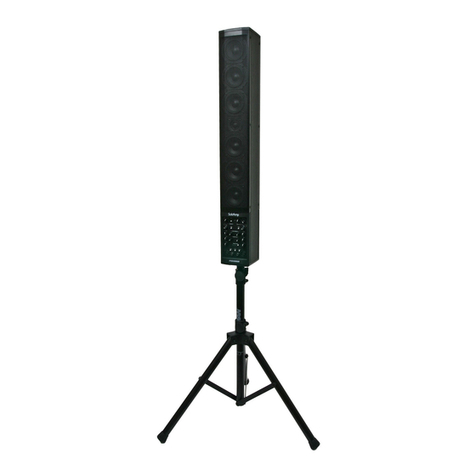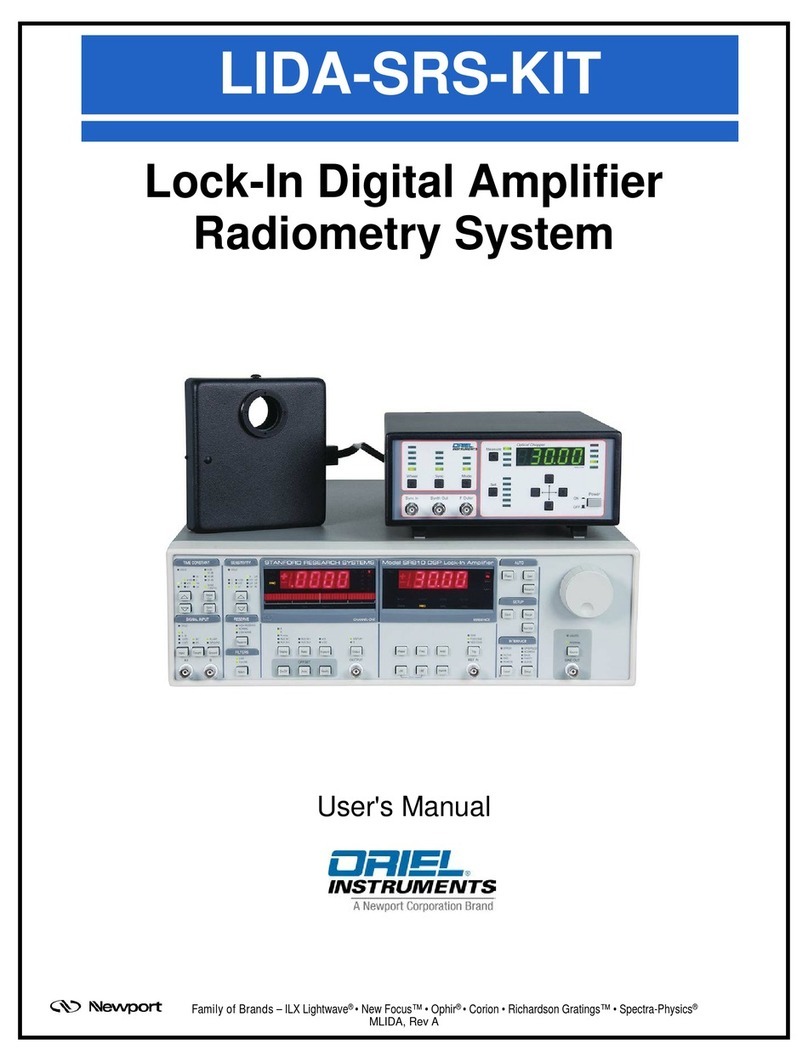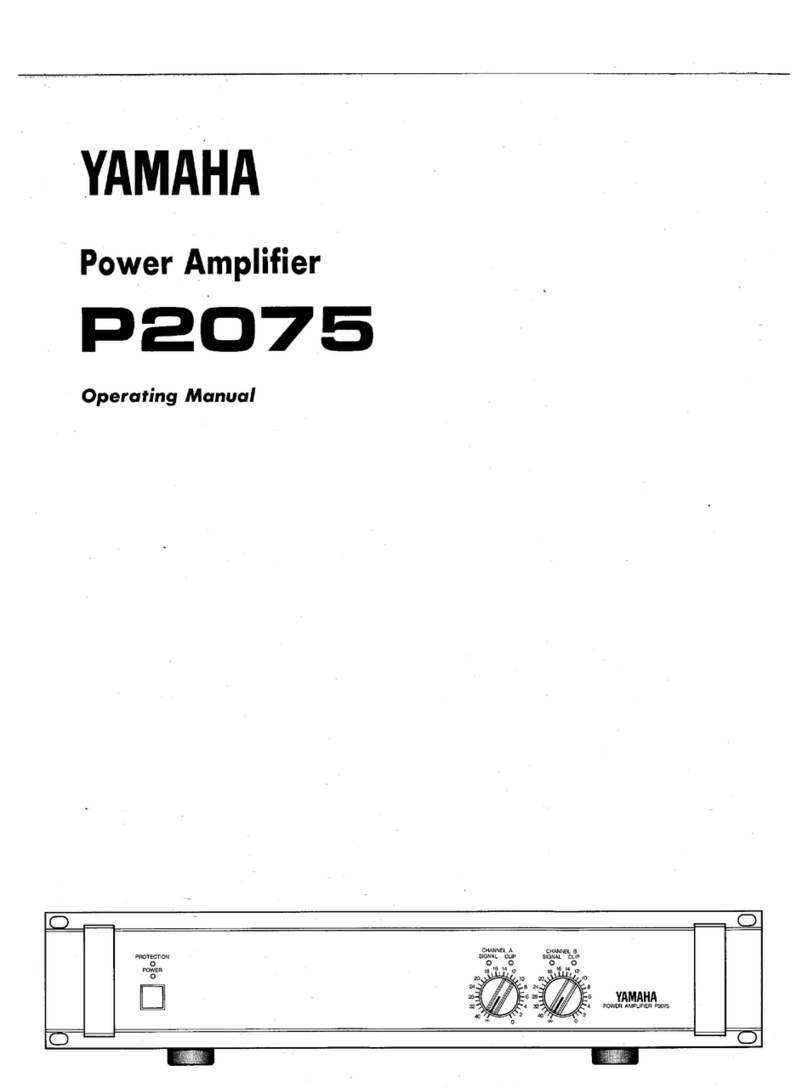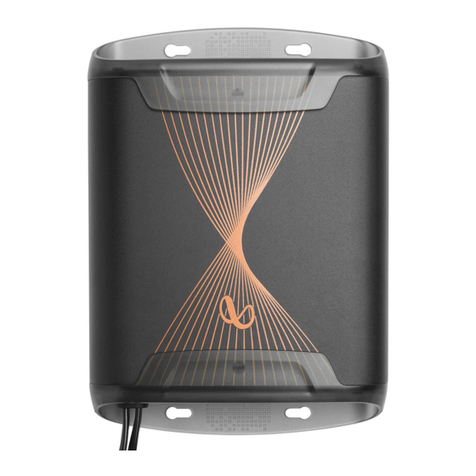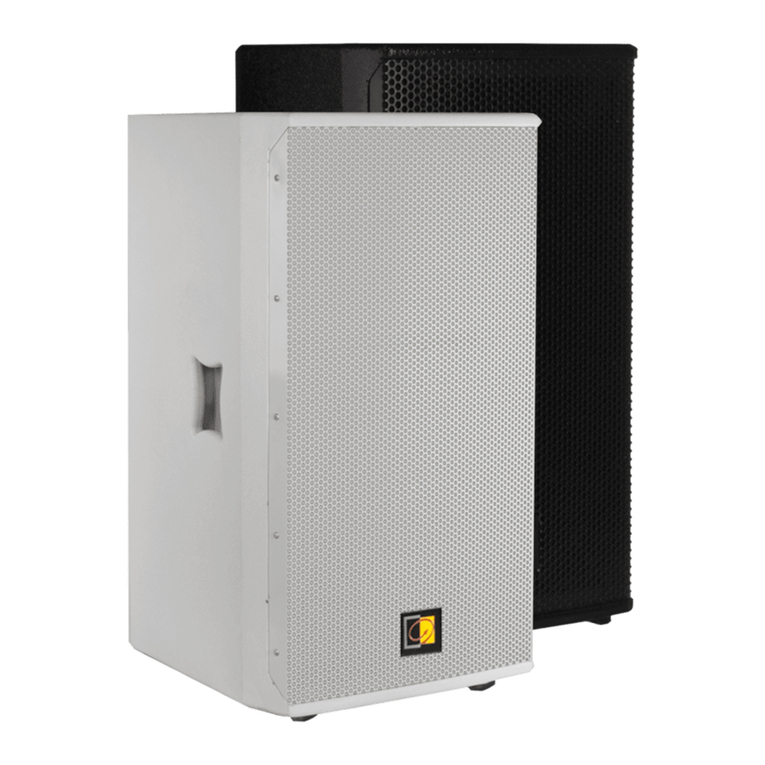Preamble Instruments 1850A Assembly instructions

0
0
0
e
0
0
0
0
0
0
0
0
0
0
0
0
0
0
0
0
0
0
0
0
0
0
0
e
0
0
0
0
0
0
0
e
0
0
e
0
e
0
e
e
pREAMBLE
- VIINSTRUMENTS
1850A and 1855A
DIFFERENTIAL AMPLIFIERS
March10, 1999
PREAMBLEINSTRUMENTS,Inc,
P.O. Box6118
Beaverton, OR97007-0118

0
0
0
0
0
0
0
0
0
0
0
0
0
0
0
0
0
0
0
0
0
0
0
0
0
0
0
0
0
0
0
0
0
0
0
0
0
0
0
0
0
0
0
O
03-10-99
TABLE OF CONTENTS
Section 1 SPECIFICATIONS
Introduction............................................................................. 1-l
1850/1855ASpecifications...................................................... 1-2
PowerRequirements&PhysicalCharacteristics..................... 1-3
1850BlockDiagram................................................................ 1-4
1855ABlockDiagram............................................................. 1-5
Section 2 OPERATING INSTRUCTIONS,
CONTROLS AND INDICATORS
FrontPanel............................................................................... 2-1
RearPanel................................................................................ 2-4
NewFeaturesof 1850Aand1855A......................................... 2-5
OscilloscopeSettings............................................................... 2-6
Model1850Operation............................................................. 2-7
Section 3 GENERAL OPERATING INFORMATION
GettingStarted......................................................................... 3-1
PowerConnection.................................................................... 3-1
1855AFrontPanelOperation.................................................. 3-I
AttenuatorandGainOperation................................................ 3-1
ComparisonVoltageOperation............................................... 3-2
DifferentialOffsetOperation................................................... 3-3
WhichOffsetModeShouldBeUsed?..................................... 3-4
OperatorTrapstoAvoid.......................................................... 3-4
1850A/1855A

1850A/1855A
INITIALSCOPEAND1855SETUP
L_ .............
7---- ’ ........
~---
i ’
SELECT50OHMINPUT
OR
PROVIDE60OHMTERMINATOR
~,.~
50mV/I)fV
Iv ~.ImV/DIV
Posmo
"~’ SETSENSITMTYTO50mVldiv
DURINGOPgRA13ON.USE
ONLY5OmvIoNON
MORESENSITIVEPosmoN$
POSITIONTRACETOCENTER<
SCREEN(DCOFFSET=OFF)
00NOTUSETHESCOPE
POSmONOROFFSE’f
AFrERTHISINIT~LSETUP
~ AC
/~,’f oc ’~ o:
//,!
///’ @ SELECTDCINPUTCOUPLING
//s
’ /
/
//
,/
CONNECTAMPLIFIEROUTPUTTO
SCOPEINPUTWITH50 OHMCOAX
~
......... mE
LJ ~e~ ~ ~ ~ ’ ’~’ --"~<"
/,
l g ] ATTACH XCl00 PROBES ~ ~’2"
DONOTADJUSTPROBECOMPENSATION
~THOUTFIRSTREFERRINGTOTHEMANUAL
TRACEON~COPE
USEVDIFFANDPVGTOPOSITION
~i PVGDI|PLAYSTHSVOLTAGEOFTHESIGNALASff
PASSESTHROUGHTHESCOPEDIEPLAYCENTERLIRE.
(RE~IRREDTOTHEPROIEI~P)
CONNECTPROBECODINGLEADTO
PROBECODEINPUTON1866REARPANEL
ii 03116/99
e
o
o
i
i
e
e
e
e
o
o
e
e
e
e
e
o
o
e
o
e
o
e
o
o
o
i)
o
o
e
e
o
o
o
o
o
e
e
o
o
o
o
o
o

0
0
0
0
0
0
0
0
0
0
0
Specifications- 1850A/1855A
SECTION 1
SPECIFICATIONS
0
0
0
0
0
0
0
0
0
0
0
0
0
0
0
0
0
0
0
0
0
0
0
0
00
0
0
0
0
0
0
0
INTRODUCTION
The 1850Aand 1855Aare stand-alone high performance
100MHzdifferential amplifiers. Theyare intended to act
as signal conditioningpreamplifiers for oscilloscopes, digi-
tizers, networkanalyzers andspectrumanalyzers, providing
differential measurementcapability to instruments having
only a single-ended input. When used with an
1850A/1855A,most good quality oscilloscopes can obtain
CommonMode Rejection Ratio (CMRR)and overdrive
recovery performancethat waspreviously unobtainable in
¯ anyproduct.
Amplifier gain maybe set to 1 or 10. Abuilt-in input at-
tenuator maybe separately set to attenuate signals by a
factor of 10, allowing gains of 10, I, or 0.1 and common
modedynamicrange of_15.5V (+1) or +_.155V(+10).
tional probes increase the maximuminput signal and com-
monmoderanges in proportion to their attenuation ratio,
but not exceeding their maximuminput voltage rating.
Effective gain of the 1855A,including probe attenuation,
amplifier gain andattenuator settings, is automaticallydis-
played.
The 1855Ahas a bandwidth of 100 MHz,but any one of
the three 3-pole bandwidthlimit filters maybe selected to
reduce bandwidth to 20MHz,IMHzor 100kHz to limit
noise abovethe frequencyof interest.
03/i 0/99
The 1850A/1855Aoutput is carefully limited at +500mV
so that the oscilloscope is not overdriven by large inputs.
This allows manyoscilloscopes to directly measure the
settling of D/Aconverters with 14 bit (60ppm)precision,
better than anyother differential comparator.
The1855Afeatures a built-in Precision Voltage Generator
(PVG)that can be set to any voltage between+15.5 volts
(+10volts in Differential Offset mode)with 100~tVresolu-
tion. Eachdigit of the voltage generator output can be in-
dividually incremented or decremented and the sign
changed between + and -. The PVG’soutput can be se-
lected as an input to the inverting (-) input of the amplifier
for operation as a differential comparatoror applied inter-
nally as a true differential offset voltage. Thevoltage is
also available to be used externally through a rear panel
connector. Onthe 1850A,this connector becomesan input
through whichthe user can apply an external voltage to
achieve the samedifferential offset and comparisonfunc-
tions.
The 1850A/1855A operates from 100 to 250 VACline
withoutline switching.
Highperformancedifferential probes such as the Preamble
Instruments XC10010X/100Xhigh CMRRprobes are rec-
ommended.
i-1

Specifications m1850A/1855A
1850A/1855A SPECIFICATIONS
GENERAL:
Amplifiergain:
Gainaccuracy:
Bandwidth:
Rise time:
Output impedance:
Intended output load:
Maximumoutput:
Input attenuation:
+10 ATTENUATORaccumc3.,:
Maxdifferential linear input:
(X10 GAIN, +1 ATTENUATOR):
(X1 GAIN, +1 ATTENUATOR)
(X10 GAIN, +I0 ATTENUATOR)
(X1 GAIN, +10 ATTENUATOR)
Maximuminput slew rate:
(+1 ATTENUATOR.X1 probe):
(+Ill ATTENUATORor X10 probe):
(+10 ATTENUATORand X10 probe):
(+1 ATTENUATORand XI00 probe):
(+Ill ATTENUATORand X100 probe):
Input noise (X10 GAIN):
DCdrift (X10 GAIN):
Commonmoderejection ratio:
Maxcommonmodeinput:
(+1 ATTENUATOR):
(+Ill ATTENUATOR):
(+10 ATTENUATORand X10 probe)
Input resistance:
(+1 ATTENUATOR.X1 or X10 GAIN):
(+10 ATTENUATOR.X1 or X10 GAIN):
Input capacitance (+1 or +10 ATTENUATOR):
Bandwidthlimit filters (1855Aonly):
Filter characteristics ~ 1855Aonly):
+INPUTselections:
-INPUTselections:
Input couplingcapacitor:
Input gate current (X1 and X10GAIN,+1 ATTENUATOR):
Input protection:
DIFFERENTIAL OFFSET (VDIFF) MODE:
Differential offset range(referred to input):
(X10 GAIN, +I ATrENUATOR):
(X1 GAIN, +1 ATTENUATOR):
(XI0 GAIN, +10 ATTENUATOR):
(X1 GAIN, +10 ATTENUATOR):
(XI GAIN, +10 ATTENUATOR.X10 probe)
Differential offset accuracy:
(X10 GAIN, +I ATTENUATOR):
(X1 GAIN, +1 ATTENUATOR):
(X10 GAIN, +10 ATTENUATOR):
(XI GAIN, +10 ATTENUATOR):
1-2
1 orl0
+_1%
>I00MHz
<3.5ns
50 ohms
50 ohms
limited at +0.50Vinto 50 ohms
+1or +10
_+0.05%
N).O5Vor +0.5Vwith XIOprobe
N).5 or +5.0Vwith XIOprobe
_+0.5 or +-5.0Vwith XIOprobe
_+5.0 or +50Vwith XIOprobe
O.5 V/ns
5.0V/ns
50V/ns
50V/ns
500V/ns
<4nV/sqrt Hz. broadband
50~V/°C
See Figure 1-1
+15.5V (X1 or X10GAIN)
+-I55V(X1 or X10 GAIN)
+l.55kV(Xl or X10GAIN)
1 megohmor 100 megohms
1 megohm
20pF
20MHz.1.0MHz and 100kHz
18dB/octave(3-pole Bessel)
AC, OFF(Pmtegra),
AC, OFF(precharge), DC, Vco~
0.1 ~tF, 400VDC
<10pA. 0-45°C
protected to +_250V,automaticinput disconnect with
manualreset
+-lV
+IOV
+-IOV
+lOOV
+l.OkV
0.1%+ 50V
0.1%+ 500V
0.15%+ 500V
0.15% + 5mV
03/10/99

0
0
0
0
0
0
0
0
0
0
0
0
0
0
0
0
0
0
0
0
0
0
0
0
0
0
0
0
0
0
0
0
0
0
0
0
0
0
0
0
0
0
0
0
COMPARISONOFFSET (Vco~tp) MODE:
Effective comparisonvoltage range:
(+1 ATTENUATOR):
(+10 ATTENUATOR):
(Xl0 probe and +10 ATTENUATOR):
PRECISION VOLTAGESOURCE(1855A only):
Output range:
DCaccuracy:
Resolution:
Control:
Temperaturecoefficient:
Type:
Output:
PVG AUTOZERO:
POWER REQUIREMENTS
Line voltage requirement:
Line frequency range:
Powerrequirement:
ENVIRONMENTAL CHARACTERISTICS
Operating Range:
Non-Operating:
PHYSICAL CHARACTERISTICS
Height:
Width:
Depth:
Weight:
Shipping Weight:
Specifications- 1850A/1855A
’_15.5V (Xl or Xl0 GAIN)
+155V (Xl or Xl0 GAIN)
1.55kV (Xl or Xl0 GAIN)
+15.5V
0.05%of reading +500~V(0° to 50°C)
100~tV
All digits are addressable. Digit carries to next decade
typically <5ppm/°Cof full scale
Ovenstabilized buried Zener
Appliedto inverting input andavailable at rear panel
Sets output to zero when0.0 volts selected and
in error by morethan 0.5mVthereafter
100 to 250VAC
48 - 66Hz
35 Wmaximum
0 to 50°C
-40 to 75°C
7,29cm(2.87")
21.2cm(8.36")
23.2cm(9.12")
2.15kg(4.751b)
3.12kg(6.881b)
c
M
R
R
1000000
100000
~-- i
I
i.
1000~
1000
i
100 :
i , ’ i i
|0 I
IAMPLIF’IERSE’I’T1NGS
tXI OR Xl0 GAIN. XI Aq~’ENUATOR L
1 RHz 10 kHz 100 kHz 1 MHz 10 MHz 100 MHz
Figure 1-1. CMRRvs Frequency
1131111199 1-3

1-4
Specifications ~ 1850A/1855A
03110199
O
O
O
O
O
O
O
O
O
O
O
O
0
O
O
O
O
O
O
0
O
O
|
O
O
O
O
e
O
II
O

0
0
0
0
0
0
0
0
0
0
0
0
0
0
0
0
0
0
0
0
0
0
0
0
0
0
0
0
0
0
0
0
0
0
0
@
0
0
03/10/99
Specifications- 1850A/1855A
\

0
0
0
9
0
0
0
0
0
0
0
0
0
0
0
0
0
0
0
0
0
0
0
0
0
0
0
0
0
0
0
0
0
0
0
0
0
0
0
0
0
0
0
0
Operating Instructions, Controls and Indicators-- 1850A/1855A
SECTION 2
OPERATING INSTRUCTIONS, CONTROLS
AND INDICATORS
FRONTPANEL
ATTENUATOR
Signals connected to the +INPUTand the -INPUTare
connected either directly to the 1850A/1855A’samplifier
inputs or to the input attenuators. Theinput attenuators are
passive networkswhichdivide each signal by ten.
In +1 modethe front panel input connectors are directly
connectedto the 1850A/1855Aamplifier’s differential in-
puts.
In +10modeeach front panel input connector is connected
to a passive 1 megohmattenuator. Theattenuator output is
connected to the 1850A/1855Aamplifier’s corresponding
differential input. Thesignal at each input is attenuated bv
a factorof ten.
GAIN
The1850A/1855Aamplifier gain (amplification) is select-
able betweenXI and Xl0. Theamplified signal appears at
the rear panel AMPLIFIEROUTPUTconnector.
Asignal connected to the +INPUTwill maintain its polar-
ity at the output connector. A signal connected to the
-INPUTwill be inverted in polarity.
Proper gain is obtained whenthe 1850A/1855Adrives a 50
ohmload such as an oscilloscope with input impedanceset
to 50 ohms. Anoscilloscope with only a 1 megohminput
impedanceavailable should have a 50 ohmcoaxial termi-
nation placed on its input connector. The1850A/1855Ais
then connectedto the oscilloscope throughthe coa.,dal ter-
mination.
Theamplifier gain and the input attenuator are individually
selectable to provide versatility. For example,the compari-
son voltage range is changed from +15.5000 to +155.000
volts by changing the ATTENUATORfrom +1 to +10.
Theoverall gain canstill beset to either 1 or 0.1 byselect-
ing the GAINmode,Xl0 or Xl, as desired.
AUTOZEROis a feature invoked wheneither the Xl or
Xl0 button is pushed, even if a different gain is not se-
lected. AUTOZEROmomentarily sets the input coupling
to OFFand determinesthe offset necessary, to set the out-
put at 0 volts within about 25~V.Duringthis process the
front panel is unresponsive. Whenfinished, the input cou-
pling returns to its previous mode. AUTOZEROusually
takes less than one second. This handvfeature allows the
operator to DCbalance the 1850A/1855Asimply by push-
ing the GAINbutton which is already illuminated. When
changing gains, the AUTOZEROfeature is automatically
invoked,freshly adjusting the amplifier’s DCbalance.
+INPUT COUPLING (AC OFF DC)
,oo.cZ
%
~,,_2~
In OFFmode,the input connector is disconnected fromthe
amplifier input_ and the amplifier input is connected to
ground. The ACcoupling capacitor is connected between
the +INPUTand ground through 1 megohm(either the
input attenuator or the input resistor), independentof the
INPUTRESISTANCEselected. In this mode, the AC
coupling capacitor is quickly charged to the average DC
input voltage. OFFmodeis also referred to as precharge
mode.Precharge is particularly useful whenplanning to
ACcouple and measure voltages in excess of 19 volts. The
1850A/1855Ainput coupling is set to OFFand connected
to the circuit under test. Whenthe +INPUTis changed
from OFFto ACmode, the coupling capacitor is already
charged, andthe trace properly centered on the oscilloscope
screen. Additionally, the risk of tripping the input overload
detector andautomatically disconnectingthe input is elimi-
nated.
In the ACmode, the +INPUTis connected through an AC
coupling capacitor to the amplifier input or the input at-
tenuator. Thecoupling capacitor retains its chargewhenthe
input is switchedto I)C, makingit possible to return to the
samecircuit without the precharge time. But this also
makesit possible to discharge the coupling capacitor into
another circuit under test if its DCvoltage differs by more
than approximately 19 volts from the voltage on the cou-
pling capacitor. Thedischarge current is limited to about
70mA,but this could damagesomecircuits. It is therefore
03/10/99 2-1

OperatingInstructions, Controls and Indicators-- 1850A/1855A
recommendedthat the +INPUTcoupling first be changed
to OFF(precharge) whenmeasuring a newcircuit point.
This will safely recharge the ACcoupling capacitor in less
than 0.3 seconds. TheACcoupling capacitor is 0. I~F and
rated at 400VDC.
DCand low frequencies are attenuated by the ACcoupling
capacitor and the input resistance. With the ATTEN-
UATORset to +Ill, or set to +1 with the INPUT
RESISTANCEset to 1 megohm,the low frequency cut off
(-3dB point) is approximately 1.6Hz, lower than mostos-
cilloscopesby a factor of 5. Whenthe input attenuator is set
to +1, the INPUTRESISTANCEmay be set to I00 me-
gohms, and the -3dB point is 0.016Hz. This extremely low
frequency cut off is often handyin observing low fre-
quencynoise riding on large (up to 400 volts) DCvoltages.
In the DCmode. the +INPUTconnector is connected to
the amplifier either directly or throughthe input attenuator,
and the ACand DCattenuation are the same.
-INPUT COUPLING(AC OFF DC Vco~n,)
inverting input. The1850A/1855Aoutput is therefore zero
wheneverthese two voltages are equal. For this reason, the
voltageapplied to the inverting input is called a comparison
voltage,Vco.~n,.
Vco.~pis often used to makeprecise measurementsof large
signals by comparingthe accurately knownVco,~n,with the
unknownsignal. It can also be used to measurethe actual
voltage at any point of a waveform
PRECISION VOLTAGEGENERATOR(PVG) output
range is +15.500volts. ThePVGis never attenuated bv the
input attenuator. Attenuation of the +INPUTsignal bv the
+11)input attenuator will cause the PVGto null out an input
voltage up to +155.01)volts whichis ten times larger than
the actual PVGvoltage. Whenthe 1855Ais used with at-
tenuating probes that feature readout, the PVGdisplay is
changedto indicate the voltage at the +INPUTprobe tip
whichwill bring the amplifier output to zero.
The -INPUTconnector is not useable whenVco~n, is se-
lected.
r~uu ’~ ve~o
pqrc,S,t3N x --
err
:.’,~AC,VO~
-.’~ 7-=- .....
t-T-7 "<~>~utc, r;"
,c
¯~(S,SlANCC
The -INPUThas the same coupling modes as the +INPUT
plus one additional option, Vco~,(comparisonvoltage).
The1855Agenerates a voltage controlled by the push but-
tons above and belowthe front panel numerical display.
This voltage is called the Precision Voltage Generator
(PVG). The 1850Adoes not have a built-in PVGand the
user must supply a dc voltage in the range of -15.5V to
+ 15.5Vto the rear panel OFFSETconnector.
In Vco~n,mode,the 1855A’sPVGis connected to the am-
plifier’s inverting input throughan internal filter designed
to eliminate radio and television signal interference. The
1850Adoes not have the PVG,but uses an externally sup-
plied voltage. See Page 2-6 for Vco~operation with the
1850A.
The1850A/1855A’samplifier subtracts the voltage applied
to its inverting input fromthe voltage applied to its non-
VDxw(differential offset voltage) is an instrument mode
rather than a type of input coupling. TheVmrrmode’allows
the PVG(or an external source in the case of the 1850A)
inject an offset signal into the 1850A/1855Awhile still
using both inputs for full differential operation. This mode
can be used as a position control to movethe trace on the
oscilloscopescreen in preferenceto using the oscilloscope’s
position or offset control. Theoscilloscope’s position and
offset controls should alwavs be set to zero so that the
1850A/1855A’sdvnamic range is properly centered. Op-
eration of the 1850A/1855Ausing the VDXWfunction is the
sameas VcoMrexcept for the following:
¯ The -INPUTremains active, allowing full use of the
1850A/1855Aas a differential amplifier.
¯ The maximumrange of the PVG(1855A)or the external
source (1850A)is _+10.000 volts in X1GAINand ±1.0000
volts in X10 GAIN. The effects of the +10 input
ATTENUATORand probe attenuation are the same as
whenusing Vcosn,,i.e., anyinput attenuation multiplies the
effective offset.
¯ TheVDtrVmodeoffset accuracyis slightly less than that
obtained using Vcosw.
The1855A’sPVGdisplay is changedto indicate the volt-
age that. if applied between the +INPUTand -INPUT,
wouldbring the amplifier output to zero. Whenthe 1855A
is usedwith attenuating probes whichfeature readout, the
PVGdisplay is scaled to include the effect of probe at-
tenuation.
2-2 03110199
O
O
O
O
O
O
O
O
O
O
O
O
O
O
O
O
O
O
O
O
O
O
O
O
O
O
O
O
O
O
O
O
O
O
O
O
O
O
O
O
0
0
O

0
0
0
0
0
0
0
0
0
0
0
0
0
0
0
0
0
0
0
0
0
0
0
0
0
0
0
0
0
0
0
0
0
0
0
0
0
0
0
0
0
0
0
0
Operating Instructions, Controls and Indicators- 1850A/1855A
INPUT RESISTANCE
Whenthe input ATTENUATORis set to +1. the input
resistance can be increased from 1 megohmto 100 me-
gohms. This is advantageous whenmeasuring high imped-
ance circuits or whenACcoupling is neededwith a very.
lowfrequencycut off.
Unbalancedsource impedancescan have an adverse effect
on commonmoderejection. For example, a differential
source with impedances of 1000 and 2000 ohms, each
loaded with 1 megohmwill have a commonmoderejection
ratio (CMRR)of 1000 to I. The commonmoderejection
ratio can be improved to 100,000 to 1 by using 100 me-
gohminput resistance.
This limitation is also apparent whentrying to makeaccu-
rate measurements using VcoMP.A 10.000 volt reference
with a I000 ohmoutput impedance will be reduced to
9.9900 volts by the 1850A/1855A1 megohminput resis-
tance, introducing a 10mVerror in the measurement.In-
creasing the input resistance to 100 megohmsdecreases this
error to 1001aV.
Oscilloscope inputs have a small input current whichcan
cause an offset whenmeasuring high impedancecircuits.
The offset can be observed by opening and shorting the
input to ground. The 1850A/1855Ahas a temperature-
compensatedinput current pull away(cancellation) which
works in both the 1 megohmand 100 megohmINPUT
RESISTANCEmodes. Its input offset current is consid-
erably less than that of mostoscilloscopes.
EFFECTIVE GAIN (1855A ONLY)
Six lights (LEDs)across the top of the 1855Afront panel
indicate the total gain fromthe instrumentinput to output.
Whenthe XIlight is lighted, the overall amplifier voltage
gain (amplification) is unity. Similarly, XI0indicates
overall amplification of ten times. +10indicates the voltage
amplificationis 0. I, andso forth.
WhenPreamble Instruments or other encoded probes are
properly used. the effective gain includes the probe’s at-
tenuationfactor.
BWLIMIT (1855A ONLY)
FULL-- The 1855A amplifier’s full bandwidth, over
100MHz,is passed to the oscilloscope, spectrumanalyzer
or digitizer. Frequencyresponse andtransient response are
essentially independentof the oscilloscope’s input imped-
ance.
20MHzh A 20MHzthree pole (I 8dB/octave) filter allows
the 1855Ato reduceextraneous noise. This filter is a pas-
sive LCdesign and is intended to drive a 50 ohmload.
Withoutthe load, the filter’s frequencyresponse andtran-
sient responseare altered.
I MHz-- The I MHzfilter is of the samedesign as the
10Ml-lzfilter, andthe sameremarksapply.
100kHzh The100kHzfilter is an active filter with a 50
ohmoutput impedance. Transient and frequency response
are independentof the load impedance.Aninternal adjust-
mentminimizesthe filter’s DCoffset.
PRECISION VOLTAGE GENERATOR(PVG)
(1855A ONLY)
ThePVGgenerates the voltage whichis used in the Vco,~n,
and VD~VVmodes and appears at the rear panel OFFSET
VOLTAGE (PVG) output connector.
Aboveeach digit is a push button whichincrements the
corresponding digit by one whenpushed. Whenheld, the
digit continues to increment, eventually incrementing the
next higherdigit.
Similarly, beloweach digit is a push button whichdecre-
mentsthe correspondingdigit.
The + button above the left-most digit changes the PVG
output polarity. TheZERObutton belowthe left-most digit
sets the output to zero and invokes the PVG’s AUTO
ZEROfunction.
The PVGAUTOZEROresets the PVGoutput to zero to
eliminate any drift which mayhave occurred in the PVG
due to low frequency noise, or long term drift. PVGAUTO
ZEROis invoked each time the ZERObutton is pressed
and reinvoked as needed if the output exceeds approxi-
mately 500uV. The PVGAUTOZEROonly functions
whenthe PVGdisplay reads zero.
OVERLOAD
Whena signal which could damagethe 1850A/1855Ahas
been applied to either input connector, the 1850A/1855A
protects itself by disconnecting the signal. Theinput cou-
pling modechanges to OFF, and the OVERLOADlight is
turned on.
Removethe offending input. The 1850A/1855Ais reset
and the OVERLOADlight goes out whenany of the input
coupling modes(AC, OFF,or DC)is selected.
Whenthe ATTENUATORis set to +1, a signal of ap-
proximately+19volts will cause the input to drawcurrent
and the OVERLOADlight to come on. Transients too
rapid to be disconnected by the input coupling relay will
drawup to about 70mAof input current. Inputs in excess of
250 volts may cause permanent damage to the
1850A/I 855A.
03/10/99 2-3

Operating Instructions, Controls and Indicators- 1850A/1855A
The input is not disconnected whenthe ATTENUATORis
set to +10. Theinput attenuator is rated at 400volts maxi-
mumcontinuous input.
REAR PANEL
POWER
Removingthe powerfromthe instrument by either turning
the powerswitch to 0 (off) position or unpluggingit will
cause the oven to lose power and require time (about 30
minutes) for the PVGto stabilize. In high-humidity envi-
ronmentsthe time to stabilize maybe muchlonger. In high
humidity environments or whenwarm-uptime inhibits us-
age, werecommendthat the instrument be left plugged in
at all timesandthe powerswitchleft in the ! (on) position.
Normalinstrument operation is obtained with the power
switch in the 1 (on) position. Theinstrument reaches its
specified performancein 30 minutes.
In the 1850A,poweris applied whenthe powerswitch is in
the 1 (on) position.
PRECISION VOLTAGE GENERATOR OFFSET
VOLTAGE(1855A ONLY)
The rear panel OFFSETVOLTAGEBNC(PVG) output
connector, is a monitorof the Precision Voltage Generator
(PVG), It is the same voltage as that applied to the
-INPUTwhen the -INPUTcoupling is VcoMPor inter-
nally to the 1855AwhenValrr is selected. The OFFSET
VOLTAGEoutput can be used either to monitor the PVG
with a digital voltmeter (DVM)or as an input to one
more Preamble 1850As or 1855As, There is a 1.59kHz
single-pole low pass filter betweenthe PVGoutput and the
-INPUTwhich removes radio frequency interference
(RFI). This filter doesnot attenuate the PVGsignal,
ThePVGoutput is not attenuated by the input attenuator or
probes, whereasthe input signal is. Thereforethe effective
range of VcoMPis increased by a factor of 10 whenthe +10
ATTENUATORis selected or a +10 attenuating probe is
used to attenuate the input signal. ThePVGnumericaldis-
play reflects the attenuator setting andprobe attenuation
whenthe probe is readout encoded.As an example,if there
are no probes attached, the +!0 ATTENUATORis se-
lected and the display is set to read -155.000,the PVGout-
put will actually be-15.5 volts.
Thedecimalin the display will be in the correct location to
indicate the voltage at the PVGoutput whenno probes are
attached and +1 ATTENUATORand X1 GAINare se-
lected.
The OFFSETVOLTAGEBNC(PVG) output also pres-
ents the samevoltage used internally for differential offset
whenVt~t~is selected. Becausethe PVGis applied to the
amplifierto create a true differential offset, the relationship
between Vanvv and the voltage at the OFFSET
VOLTAGEBNC(PVG) output (changes with the ampli-
fier gain selection accordingto the followingtable:
FRONT PANEL SETTINGS MAXIMUM
PVG
GAIN ATTEN VDIFF OUTPUT
XI ÷1 ±lOV ±lOV
Xl ÷1o + 100V ±lOV
XIO +I ±IV +IOV
X10 +1o _.+10V _+lOV
ThemaximumVmvvis multiplied by any probe attenuation
factor. The1855Afront panel displays the correct offset
referred to the instrument input. Whenusing readout en-
coded probes which the 1855Asenses, the PVGreadout
calculates the effective differential offset at the probetip.
Of course, both probes must have the same attenuation
factor.
AMPLIFIER OUTPUT
The AMPLIFIEROUTPUTBNCis intended to be used
with an oscilloscope, spectrumanalyzer or digitizer having
a 50 ohm input resistance. The 1850A/1855A
AMPLIFIEROUTPUTimpedance is 50 ohms. Without
the 50 ohmload, the amplifier gain is twice the amount
indicated on the front panel. Additionally, the signal pre-
sentedto an oscilloscope(spectrumanalyzer or digitizer)
as large as +l volt. This maycause the oscilloscope to sig-
nificantly increase its overdrive recovery time, obviating
one of the 1850A/1855A’simportant features, fast over-
drive recovery.
Withthe IMHzor 20MHzbandwidthlimit filters selected,
the 1855Aamplifier is not well reverse terminated at high
frequencies. Whenthe oscilloscope’s input impedanceis 50
ohms,these passive filters workproperly.
With FULLor 100kHzbandwidth limit selections, the
1855Aoutput impedanceis 50 ohms,and the transient re-
sponseis independentof whetherthe oscilloscope termina-
tion is present.
2-4 03/10/99
0
0
0
0
0
0
0
0
0
0
0
0
0
O
0
0
0
0
0
0
0
0
0
0
0
0
O
0
O
O
0
O

0
0
0
@
@
0
0
@
0
0
0
0
0
@
0
0
0
0
0
0
0
0
0
0
0
0
0
0
0
0
0
0
0
0
0
0
0
0
@
0
0
0
0
0
Operating Instructions, Controls and Indicators- 1850A/1855A
PROBE CODING INPUT (1855A ONLY)
This jack is to be used with PreambleInstruments probes
andother probes that have multiple selectable attenuation
factors. Other manufacturer’s probes with standard probe
coding capability, will be properly decoded through the
1855A’sfront panel +INPUTBNCconnector.
NEW FEATURES OF THE
1850A AND 1855A
The Aversions of the 1850 and 1855 are microprocessor-
controlled. Themicroprocessor sleeps except whenproc-
essing a commandand therefore generates no digital noise
during normaloperation. ThenewA version features are:
Powerup indication Uponturn-on, the model numberand
firmwareversion are briefly displayed in the PVGreadout.
For example, 1855.11 indicates that the instrument is a
model1855Aand the firmwareversion is I.I.
20MHzBWLfilter The only analog difference between
the 1855 and 1855A is a change in the 1855’s 10MHz
bandwidthlimit filter to 20MHzin the 1855A.Neither the
1850nor the 1850Ahas a bandwidthlimit filter.
Remote operation A REMOTEconnector on the
1850A/1855Arear panel allows remote control of the in-
strument when connected to a ProBus-equipped LeCroy
oscilloscope.
Retained settings All front panel settings, including PVG
settings are retained whenthe instrument is turned off. The
1850Aand 1855Aturn on in the samestate they wereleft.
The 1855A’s PVGoutput will be in error by up to 40mV
until full warmup unless the PVGwasset to 0 whenturned
off. ThePVGoven takes approximately 7 minutes to reach
a stable temperature.
VCOMP/’VDIFFsettings retained Switching between VcoMv
and VDwFsettings will not reset the PVGto 0. VcoruP
settings greater than 10.0 volts will changeto 10.0 volts
when the PVGmode is changed to Vmrv. The original
Vco~tesetting will be retained upon switching back to
VcoMeunless the PVGsetting is changed while in Vmrv
mode.
PVGoven The 1855Aoven regulates over a wider ambi-
ent temperature rangeof approximately0 to 50 degC.
PVG AUTO ZERO The PVG AUTO ZERO function
operates when PVGZEROis pressed and whenever
0.0000 is displayed if the output exceeds 500uV.During
warm-up,this results in frequent PVGautozero operation
and maycause the 1855Ato seem unresponsive to other
03/10/99
commands.Setting the PVGto any voltage other than
0.0000will restore normalresponse.
The1855Aalso performs its autozero routine wheneverthe
X1or XI0 GAINbutton is pushed. During this time the
PVGoutput is momentarilyset to 0.
PVGabsolute mode 1855 PVGincrement and decrement
buttons alwaysfunction to incrementor decrementthe dis-
play. respectively. Whendecrementing from a positive
voltage, the display alwaysstops at zero. To obtain nega-
tive voltages, the + button mustbe pushed, and the incre-
mentbutton is used to increase the magnitudeof the nega-
tive voltage. This operation is natural if simplysetting a
voltage, but unnatural if movingan oscilloscope trace.
This is knownas the PVGabsolute mode. The 1855Apro-
vides the option of operating in this samemanner.
PVGroll through zero modeThe 1855A increment but-
tons are trace related by factory default. Theincrement
buttons movean oscilloscope trace upwardand the decre-
ment buttons movethe trace downwardindependent of the
PVGpolarity. Decrementsfroma positive voltage will roll
smoothlythrough zero. For example, if the PVGis set to
+1.0500 and the decrement IV button is pushed, the PVG
output will changeby - 1.0Vto -.95V. If howeverthe dis-
play actually reads 0.0000 during this process, the PVG
AUTOZEROwill be implemented, the display will pause
briefly at 0.0000andthe voltage will then continue to in-
crease in a negative direction. This is knownas roll
through zero mode.
Toggle PVGmodes To change from roll through zero to
absolute modeof operation hold the PVGZERObutton
and press the __. button. Changeback to the roll through
zero modeby repeating the sameoperation.
Reset to factory default The instrument can be set to
factory default modeby pressing the VcoMPand VmFVbut-
tons simultaneously. Factorydefaults are as follows:
GAIN Xl
ATTN +10
+INPUT COUPLING OFF
-INPUT COUPLING OFF"
BW LIMIT FULL
PVG +00.000
VCOMP OFF
VDIFF OFF
INPUT RESISTANCE 1M
PVG mode roll throughzero
Standby modeEarly 1850 and 1855 units supplied power
to the PVGoven when the rear panel STANDBYpush
button switch was OFF, All 1850 and 1855 units which
used a rocker switch wereturned on or off entirely by the
switch.
2-5

Operating Instructions, Controls andIndicators m1850A/1855A
The 1850Aand 1855Ado not supply power to the oven
whenthe powerswitch is off.
OSCILLOSCOPE SETTINGS
The PreambleInstruments 1850A/1855Aoutput is intended
to connectdirectly to the input of an oscilloscope, spectrum
analyzer, networkanalyzer, or digitizer, but it is important
to observe somerules so that the 1850A/1855Adelivers its
specified performance.
INPUTIMPEDANCE
The 1850A/1855Aoutput impedance is 50 ohms and the
intended load impedance is also 50 ohms. Nominalgain
(amplification) is obtained only whenthe oscilloscope,
(networkanalyzer, etc) input impedanceis set to 50 ohms.
The EFFECTIVE GAIN lights and the PRECISION
VOLTAGEGENERATORdisplay are correct only when
the 1855Ais properly terminated into 50 ohms.
Afactor of two additional gain is achievedby setting the
oscilloscope input impedanceto 1 megohm,but the IMHz
and20MHzbandwidthlimit filters will have poor transient
response. This is becausethese passive filters are located
directly at the 1855Aoutput to afford maximumsignal to
noise ratio. Their responsedependsupontermination into a
50 ohmload. Theeffects of improper termination are es-
pecially visible with long cable lengths betweenthe 1855A
andthe oscilloscope.
The FULLand 100kHzbandwidth selections have 50 ohm
output impedance over a wide bandwidth and will not
causetransient response deterioration whenconnectedto a
1 megohmload.
The oscilloscope’s gain and position controls should be
properly set to avoid displaying the non-linear portion of
the 1850A/1855A’soutput signal whenit is in overdrive.
This can be accomplished bv observing the two following
rules:
Turn the oscilloscope input coupling to "OFF" or
"GND",set the oscilloscope position control to cen-
ter screen, anddo not changeit~ If the oscilloscope
has an OFFSETcontrol, it too should be set to zero.
Returnthe oscilloscope’s input coupling to "DC".Sub-
sequently adjust the trace position on the oscilloscope
screen using the 1855APVG(an external source for the
1850A)and VDjrr modeor VcoMPinput. This assures
that the oscilloscope is looking at the center of the
1850A/1855A’sdynamicrange.
Set the oscilloscope deflection factor to no greater
than50mV/div.The mostuseful range for the oscillo-
scope deflection factors will be betweenlmV/div and
50mV/div.Using a deflection factor of 200mV/Divwill
bring the nonlinear portion of the 1850A/1855A’soutput
on screen. Digitizers should not expect accurate meas-
urements for high frequency signals from the
1850A/1855Aexceeding _.+250mVinto a 50 ohmload.
This is equivalent to +5 divisions of deflection at
50mV/divin an oscilloscope.
Moresensitive settings (e.g 100/.tV/div) available on some
oscilloscopes are perfectly acceptable, but their usefulness
may be limited by noise, particularly with the
1850A/1855AFULLbandwidth limit selection and with-
out averaging. Withthe oscilloscope set to 100~V/divand
the 1850A/1855A in the XI0 GAINmode, the over all
deflection factor will be 101aV/div.
SENSITIVITY, POSITION ANDOFFSET
Oscilloscopes are designed to maintain their accuracy for
that portion of a signal that is displayed on-screen. When
the signal is large enoughto drive the display off-screen,
the oscilloscope’s amplifier mustlimit the signal in a non-
linear mode.Oscilloscopes are designed so that no matter
howthe sensitivity, position andoffset controls are set, the
operator cannot viewthis distorted portion of the signal.
Howwell the oscilloscope handles being overdrivenis cov-
ered byits overdriverecoveryspecification, if any.
The maximum1850A/1855Aoutput is carefully controlled
so it will not exceed_+500mVwhenthe output is properly
terminated into a 50 ohmload. This is most important
whenmaking measurements that require good overdrive
performance,especially with those oscilloscopes exhibiting
poor overdrive recovery performance.
In its Xl0 GAINmode, the 1850A/1855A is somewhat
quieter than oscilloscopes, so it is preferable to use the
1850A/1855AXI0 GAINmode and a lower oscilloscope
deflection factor rather than the other wayaround. For
example,to obtain the best noise performanceat I mV/div,
set the 1850A/1855Ato XI0modeand the oscilloscope to
10mV/divrather than the use XI modeand lmV/div. This
also maximizesthe bandwidth, as someoscilloscopes give
up somebandwidthat their most sensitive settings. Other
oscilloscopes give up bits of resolution to obtain lmVor 2
mV/divsensitivity. The1850A/1855Ais very quiet in its
X10GAINmode,but no better than most oscilloscopes in
the X1mode.
Anyoscilloscope bandwidth limit setting maybe used so
long as the unlimited signal does not exceed full screen
before invoking bandwidth limit. This is a good rule to
follow in using oscilloscopes with or without the
1850A/1855A.
2-6 03/10/99
O
0
0
0
0
0
0
0
0
0
0
0
0
0
O
0
0
0
0
0
0
0
0
0
0
0
0
0
0
O
O
0
0
0
0
0
0
0
0
0
O
0
0
A

0
0
0
0
0
@
0
@
0
0
0
0
0
0
0
0
0
0
0
0
0
0
0
@
0
0
0
0
0
0
0
0
@
0
0
@
0
0
0
0
@
0
0
0
Operating Instructions, Controls and Indicators u 1850A/1855A
MODEL1850A OPERATION
Theperformance and operation of the 1850ADifferential
Amplifier is identical to that of the 1855Aexcept as fol-
lows:
I. The 1855Athree pole bandwidthlimit filters are not
included in the 1850A.The1850Aoperator should rely
on the bandwidthlimit capabilities provided with the
oscilloscope.
FRONT PANEL EFFECTIVE FULL
SETTINGS SCALE RANGE
GAIN ATTEN VCOMP VDIFF
XI +10 +155V +100V
XIO +10 +155V _lOV
XI +1 _+15.5V _lOV
XI0 +1 +15.5V +_lV
FRONT PANEL EFFECTIVE FULL
SETTINGS SCALE RANGE WITH
100X PROBE
GAIN ATTEN VCOMP VDIFF
XI +1o +_15.5kV +_10kV
X10 +10 --- 15.5kV _ 1000v
Xl ÷1 _1550v + 1000V
XI0 --:1 +_1550V +I00V
.The 1855A EFFECTIVEGAINindicator is not in-
cluded in the 1850A.The 1850Aoperator will need to
keeptrack of the various attenuator andgain settings to
accurately account for the proper deflection factor on
the oscilloscope.
.TheVco,~wand VDIFF functions operate the sameas in
the 1855A.The 1850Adoes not contain the Precision
Voltage Generator, but the voltages required for the
operation of VcoMPand VOWFcan be provided from an
external source. This voltage source is applied to the
1850A through the OFFSETVOLTAGEconnector
on the rear panel. Byusing a stable voltage source and
monitoring the level with a digital voltmeter (DVM),
operation and accuracy similar to that of the 1855A
can be achieved. The maximuminput voltage that can
be applied depends on whether the 1850Ais operated
in VcoMPor VOWFmode.
In the VcoMPmode, the maximum OFFSETVOLTAGE
connector input is limited by the 1850A/1855Acommon
modedynamic range. In the Vowvmodeit is limited by
the dynamicrange of the internal Volvvamplifier.
Thefollowing charts will help the operator stay within the
maximuminput voltage limits and understand the relation-
ship betweenthe actual voltage applied and the effective
voltage. Effective voltage is alwaysreferred to the input of
the 1850Aor the probe tip if a probe is used. Whenusing
probes, the maximumeffective voltage range maybe lim-
ited by the maximumvoltage rating of the probe.
Whenoperating the 1850Awith an external voltage source,
the applied voltage should not exceed 15.5 volts in Com-
parison modeand10.0 volts in Differential Offset mode.
Whenthese maximumexternal voltages are applied, the
effective voltageas seen bythe amplifier is as follows:
NOTE
The effective voltage is always increased by the attenu-
ator. It therefore follows that any probewill increase the
effective voltage of both VCOMPand Votrr by its attenua-
tion factor. In oti~er words, a probewith a IOOXattenua-
tion factor will increase the effective full scale rangeby
100.
Althoughthe full scale range maybe 10kVor 15.5kV, most
probes have a muchlower maximuminput voltage rating
whichmust not be exceeded.
Damageto the instrument can occurif greater than 20 volts
is applied in the Vowvmode.
03/10/99 2-7

0
0
0
0
0
0
0
0
0
0
0
0
0
0
0
0
0
0
0
0
0
0
0
0
0
0
0
0
0
0
0
0
0
0
0
0
0
General Operating Information -- 1850A/1855A
SECTION 3
GENERAL OPERATING INFORMATION
GETTING STARTED
This section will help the first time user becomefamiliar
with the operation of the 1850Aand 1855Aand howit in-
terfaces with an oscilloscope. Operation of the 1850Aand
1855Ais very similar except an external voltage source is
needed for 1850Aoperation of the comparisonand differ-
ential offset modes. "I850A/1855A"refers to either the
1850Aor 1855A.
Tocarry out the following exercises, the operator will need
an oscilloscope anda general purposefunction generator.
POWER CONNECTION
Connect the power cord to an appropriate power source.
The 1850A/1855Awill operate on a 50 or 60HzACpower
source with a nominalvoltage range from 100 volts to 250
volts. Turn the poweron by depressing the rear panel 1
(on) portion of the rocker switch.
CONNECTING TO AND SETTING UP THE OSCIL-
LOSCOPE(See page ii)
Connect a 50 ohmcoaxial cable between the AMPLIFIER
OUTPUTBNCon the 1850A/1855A rear panel and the
oscilloscope’s input connector. If the oscilloscope has I
megohmand 50 ohminput capability, select 50 ohms. If
the oscilloscope has only a one megohminput, terminate
the coaxial cable at the oscilloscope’s input with a 50 ohm
feed-through terminator. It is important that the
1850A/1855Abe terminated by 50 ohms.
Set the oscilloscope deflection factor to 50mV/div.Set the
oscilloscope’s input coupling to GNDor OFFand position
the trace to center screen. Donot movethe oscilloscope
position setting after this initial set-up. Changethe os-
cilloscope input coupling to DC.
1855A FRONT PANEL OPERATION
Change the power switch located on the 1850A/1855A’s
rear panel to 1 (on). The 1850 and 1855 will turn on
approximately 2 seconds.
All display indicators, including the red OVERLOADlight
andall segmentsin the Precision VoltageGenerator display
will be lighted.
All controls except the Precision Voltage Generator (PVG)
display will next changeto the state in whichthey wereleft
when the 1850A/1855A was last turned off. The PVG
display will show model number and firmware version
briefly. "’1855.11" meansmodel 1855A,firmware version
03/10/99
1.1. ThePVGdisplay will then return to the voltage set
whenthe 1850A/1855Awas last turned off.
During warmup, the 1855Amayseem sluggish. Enter a
"I" in the least significant digit of the PVGdisplay to kept
the microprocessor fromconstantly trying to autozero the
PVGbefore the instrument’s oven is up to temperature.
The PVGoutput will have an offset of up to 40mVduring
this period. Beforeproceedingwith the following exercise,
allow the 1855Ato warmup for at least 7 minutes. Press
the PVGZERObutton before continuing.
ATTENUATOR AND GAIN OPERATION
Conductthe following exercise to familiarize yourself with
the 1850A/1855A:Connect the function generator output
to the +INPUTBNCconnector and apply a sinewave of
50kHzand 0.5V peak amplitude. Push the DCbutton on
the 1850A/1855A’s+INPUT.The signal on the oscillo-
scope should be 2 divisions peak to peak in amplitude.
Adjust the oscilloscope’s sweepspeed and trigger to dis-
play at least two completecycles of the waveform.
Press the +1 ATTENUATORbutton. The waveform’s
magnitudeon the oscilloscope’s display will increase by a
factor of 10 and extend off the top and bottom of the
screen. The X1 light will be lighted in the EFFECTIVE
GAINdisplay. Reducethe function generator’s output until
the oscilloscope’s display is again2 divisions peakto peak.
Theoverall sensitivity of the 1855Aandthe oscilloscope is
now50mV/div.
Nowpress the XI0 GAINbutton. Observe the following
changes: The+INPUT’sDClight will momentarily go out
andits OFFlight will be lighted before returning to their
previous states. This momentarychangeis the result of the
1855Aautomatically adjusting its DCBalance (AUTO
ZERO).The XI0 light will be lighted in the EFFECTIVE
GAINdisplay and the display on the oscilloscope will
again extend off screen. The overall sensitivity of the
1855Aand the oscilloscope is now5mV/div.
3-1

General Operating Information -- 1850A/1855A
COMPARISON VOLTAGE OPERATION (VCOMP)
Leavethe 1850A/Ig55Aset up as in the previous exercise
or set as follows:
+INPUT DC
-INPUT OFF
BW LIMIT FULL
GAIN XI0
ATTENUATOR +1
INPUT RESISTANCE 1M
PVG +0.0000
COMPARISON or DIFFERENTIAL COMPARISON
EFFECTIVE GAIN XI 0
¯ Function Generator output -- 50kHz 50mVpksine
wave. connected to the 1850A/1855A’s+ INPUT.
¯ Oscilloscope- Set at 50mV/div(equivalent to 5mV/div
with 1855Aat X10GAIN)and sweep adjusted for 2 to
cycles,
Underthese conditions, the display on the oscilloscope will
extendoffthe top and bottomof the screen.
Press the -INPUT’sVco.~wbutton. This internally applies
the Precision Voltage Generator’s (PVG)output to the
1855A’s -INPUTand the OFFlight goes out (the -IN-
PUTconnector is disabled). For the 1850A, connect
variable external voltage source capable of-10V to +IOV
range to the rear panel BNCmarked OFFSET.
Note that for the 1855A, the rear panel OFFSETcon-
nector is an output which monitors the PVGvoltage.
However, the 1850AOFFSETconnector is an input ac-
cepting a range of-10V to +IOV.Serious damagewill
result whenthe 1850AOFFSETconnector is connected
to morethan+__20volts.
Thepositive and negative peaks of the waveformdisplayed
on the oscilloscope are (respectively) 10 divisions above
and belowthe display center line. Push the button above
the digit that is twoplaces right of the decimal(lOmV)
the Precision Voltage Generator (PVG)until the positive
peak of the waveformappears in the oscilloscope’s display.
Continue incrementing and decrementingPrecision Voltage
Generator’sdigits until the peakof the waveformis at the
center line of the oscilloscope’s display. Thenumberin the
Precision Voltage Generator display is the waveform’s
positive peakvoltage.
For the 1850A, manually adjust the external voltage
source until the top of the waveformis at center line of
the oscilloscope’s display. Use a DVMto monitor the
external voltage source. Thevoltage at the center line
will equal the DVMreading.
3-2
The 1850A uses an OFFSETinput range of only
-~15.5V to -15.5V (-,-10.0V to -10.0V in the VDnv~
mode). The offset is applied to the 1850A’sinternal
amplifier’s negative input directly rather than throughthe
input attenuator. Whenthe ATTENUATORis set to
÷10the effective offset is increased by a factor of 10.
Thusit takes only 9.3V applied to the rear panel OFF-
SETconnector to offset 93V applied to the +INPUT
connector. Rememberto apply this correction factor
when setting the ATTENUATORto +10. An attenuat-
ing probehas the sameeffect, so using a +100probe in-
creases the effective offset range from +15,5V to
_+1550V.Remember,howeverthat while the effective
offset is mathematicallycalculated in this fashion, many
probes are not capable of 1550 volts offset. Limit the
probeinput to the voltagerating for the probe.
Press the + button in the Precision VoltageGenerator. Ob-
serve that the negative peakof the signal is nowat or near
the oscilloscope’s display center line. Byincrementingand
decrementing the digits, the negative peak can be posi-
tioned to the oscilloscope’s display center line, Nowthe
numberin the Precision VoltageGenerator’s display is the
waveform’snegative peak voltage.
03/i 0/99
O
O
O
O
0
O
0
0
O
0
0
0
O
0
O
0
0
O
0
0
O
0
0
0
0
0
O
O
0
O
O
Q
0
0
O
e
O
O
O
t
O
O
O
a

0
0
0
0
0
0
0
0
0
0
0
0
0
0
0
0
0
0
0
0
0
0
0
0
0
0
0
0
0
0
0
0
0
0
0
0
0
0
0
0
0
0
0
0
Changethe oscilloscope’s sensitivity from 50mV/divto
I 0mV/div.Overall sensitivity, including the 1850A/1855A,
is nowlmV/div. Temporarily change the oscilloscope’s
input coupling from DCto GND(or OFF)and re-center the
trace to center screen using the oscilloscope’s position
control. Return its input coupling to DC.Nowpress the
XI0 button on the 1850A/1855A to invoke its AUTO
ZEROfunction. It is not necessary to disconnect the sig-
nal from the 1850A/1855A input to perform AUTO
ZERO.The 1850A/1855Aautomatically performs this
operation as part of the AUTOZEROroutine. (Note that
pressing the gain button that is already selected causes the
1850A/1855Ato adjust its DCbalance (invoke AUTO
ZERO),but does not changeits gain.)
Changethe Precision Voltage Generator’s reading to again
place the negative peak of the waveformat the oscillo-
scope’s center screen. Notethat the PVG(Precision Volt-
age Generator) display represents the negative peak voltage
of the waveformwith greater resolution.
TheGAINcontrol affects the 1850A/1855Aamplifier gain
but does not affect the offset range. The1855APVGdis-
play reflects this fact. The1850Aeffective offset calcula-
tion is not affected by the GAINsetting.
Returnthe oscilloscope’s sensitivity to 50mV/divand press
the 1855A’s -INPUT OFF(or ACor DC) button. The
PVGwill retain its setting andthe display on the oscillo-
scopewill be centered about the center line. Press the -IN-
PUT’sVCOMPbutton again and observe that the Precision
VoltageGenerator’s output is again connectedto the minus
input of the 1855A’s-INPUT.
Following are a few observations on using the 1855Acom-
parison voltage mode(VcoMP):
The negative input and its AC,OFFand DCcoupling
are disabled. Instead of being a differential amplifier,
the 1855Abecomesa differential comparator, it com-
pares the voltage present at the +INPUTwith the out-
put of the Precision Voltage Generator and whenthey
are equal, the outputof the 1855Ais zerovolts.
.The value displayed by the Precision Voltage Genera-
tor indicates a waveform’svoltage, with respect to
ground, as it passes throughthe oscilloscope display’s
center line. It is very importantthat the oscilloscope’s
trace be positioned to center screen if an accurate
measurementis to be madeusing this method.
.Byusing the 1855Ain the comparison voltage mode
andthe oscilloscopein a highsensitivity setting, highly
accurate voltage measurementscan be made.
.ThePrecision Voltage Generator can be used as a po-
sition control whichallows the 1855Ato operate in its
linear region.
03/10/99
General Operating Information -- !850A/1855A
DIFFERENTIALOFFSET OPERATION(VcoMP)
Leavethe 1855Aset up as in the previousexercise or set it
up as follows:
+INPUT DC
-INPUT VcoMe
BW LIMIT FULL
GAIN Xl0
ATTENUATOR +!
INPUT RESISTANCE 1M
PRECISION VOLTAGE GENERATOR -0.0500*
COMPARISON or DIFFERENTIAL COMPARISON
EFFECTIVE GAIN X10
*approximate, and apply approximately -0.05V to the
1850Arear panel OFFSETconnector.
¯ Function Generator output -- 50kHz 50mVpksine
wave connected to the +INPUTof the 1850A/1855A.
* Oscilloscope -- set at 50mV/div(equivalent to 5mV/div
with 1850A/1855Aat XI0 GAIN)and sweep adjusted for
2 to 3 cycles.
¯ Externally trigger the oscilloscope on the function gen-
erator’s output (samesignal as is applied to the I855A’s
+INPUT).
Underthese conditions, the negative peak of the display on
the oscilloscope should be very near center screen. Adjust
the Precision VoltageGenerator until the negative peak is
at center screen. For the 1850A,adjust the external voltage
sourceuntil the negativepeakis at center screen.
Press the VDIFF button. This internally applies the output of
the Precision Voltage Generator to a point within the
1855A’samplifier that facilitates a true differential offset.
Also note that the -INPUTcoupling changed. The VcoMP
light v~ent out and the OFFlight waslighted. In the line
under the Precision Voltage Generator display (COM-
PARISON or DIFFERENTIAL OFFSET), the COM-
PARISONlight went out and the DIFFERENTIALlight
waslighted. This indicates that the Precision VoltageGen-
erator will nowbe applied as a differential offset rather
than as a comparisonvoltage as in the previous exercise.
Both the +INPUTand the -INPUT inputs are now en-
abled, although the -INPUTis not in use at the moment.
Press the +_ button in the Precision Voltage Generator.
(Withthe 1850A,changethe polarity of the external volt-
age source connected to the 1850A rear panel OFFSET
connector.) Observethat the negative peak of the signal is
nowat or near the oscilloscope display’s center line. By
incrementing and decrementing the digits, the negative
peakcan be positioned to the oscilloscope display’s center
line. Nowthe numberin the Precision VoltageGenerator’s
3-3

General Operating Information -- 1850A/1855A
display is the value of the waveform’snegative peak volt-
age. Withthe 1850A,the reading of the DVMattached to
the external voltagesource will be the voltage at the oscil-
loscopecenter line.
Changethe oscilloscope’s sensitivity from 50mV/divto
10mV/div.Overall sensitivity, including the ] 850A/1855A,
is nowImV/div. Temporarily change the oscilloscope’s
input coupling from DCto GND(or OFF) and re-center
the trace to center screen using the oscilloscope’s position
control. Return its input coupling to DC.Nowpress the
1850A/1855A XI0 button to invoke its AUTOZER0
function. (Notethat pressing the gain button that is already
selected causes the 1850A/1855Ato adjust its DCbalance,
i.e. invoke AUTOZERO,but does not changeits gain.)
Changethe PVG(or external source in the 1850Acase)
again place the negative peak of the waveformat the oscil-
loscope’s center line. Notethat the Precision VoltageGen-
erator’s display moreaccurately represents the negative
peak voltage of the waveform.
Returnthe oscilloscope’s sensitivity to 50mV/divand again
press the 1850A/1855A’sVnwrbutton. TheVmrFlight will
extinguish and the oscilloscope display will be centered
aboutthe center line. Noticethat the 1855APVGretains its
setting, but the output of the PVGis not applied to the am-
plifier. Press the VD~rrbutton again and observe that the
PVG’soutput is reapplied internally to the 1855Aampli-
fier.
Followingare a fewobservations on using the differential
offset mode(Vmrr)of the 1850A/I855A:
1. Both the positive and negative inputs (AC, OFFand
DC)are enabled and the 1850A/1855Aremains a true dif-
ferential amplifier.
2. The value displayed by the Precision Voltage Genera-
tor indicates a waveform’sdifferential voltage, withrespect
to the -INPUT,as it passes through the oscilloscope dis-
play’s center line. It is very important that the oscillo-
scope’s trace be positioned to center screen if an accurate
measurementis to be madeusing this method.The voltage
applied to the 1850A’s OFFSETVOLTAGEinput also
indicates the waveform’sdifferential voltage with respect
to its-INPUT.
3. Byusing the 1855Ain the differential offset modeand
the oscilloscopein a highsensitivity setting, high resolution
voltage measurements can be made. The -INPUTis the
reference for these measurements.
4. The PVGcan be used as a position control whichal-
lowsthe 1855Ato operate in its mostlinear region.
5. The PVGwill retain its voltage whenswitching be-
tween Vco~lPand Vatvr if the voltage is less than 10.0
volts in magnitude, the maximumallowed for VDwF.
3-4
WHICH OFFSET MODESHOULD BE USED?
Theoperations of the Comparison(Vco~w)and Differential
Offset modes(VDIFF)are quite similar. The Comparison
modeis easier to understand and has a wider range, 15.5
volts vs 10.0 volts. TheDifferential Offset modeprovides
offset operation while allowing the 1855Ato function as a
true differential amplifier.
For mostapplications, the Differential Offset (Vmrr)mode
has advantages over the Comparison(Vco,~w)mode. When
using the Comparisonmode, the Precision Voltage Gen-
erator’s output is subtracted fromthe +INPUT,Except for
the PVG’soffset, operation is the sameas a standard sin-
gle-ended oscilloscope...only one 1850A/1855Ainput is
available. In the Differential Offset mode, the
1850A/1855Afunctions as a differential amplifier...both
+INPUTand -INPUTfunction. This allows the operator
to choosea measurementreference point other than ground.
Evenin ground referenced measurements,signal degrada-
tion can be reduced by using the -INPUTprobe to select a
groundreference point with the least noise. This methodis
especially useful in eliminating humand noise fromground
loops.
There is one instance in which the Differential Offset
(VDIvr)modemight result in morenoise. Magneticpick-up
is proportional to the area betweenthe probes. If twisting
the probeleads together is not sufficient to reducemagnetic
pick-up, the Comparison Offset (Vcos~r) mode may
preferable.
Because the Comparison Offset modeuses the CMRRof
the 1850A/1855Awhile the Differential Offset modeuses
an internal amplifier, the Comparison Offset modeis
slightly moreaccurate.
TheDifferential Offset (Vnjrr) modeis usually the mode
choice if the wider range or higher accuracy of the Com-
parison (VcoMe)modeis not needed.
OPERATOR TRAPS TO AVOID
Thereare a fewsituations the operator of either the 1850A
or 1855Ashould be aware of to avoid some potential
measurementtraps.
EXCEEDING COMMONMODE RANGE
The 1850Aand 1855ADifferential Amplifiers have the
largest commonmoderange available for this type of am-
plifier and are very good at measuringsmall differences
between two large signals. However,care still must be
taken not to allow a large commonmodesignal to exceed
the available commonmoderange.
The maximumcommonmode range is ±15.5 volts whena
signal is applied directly (÷1 ATTENUATORand no
probes) to the 1850A/1855A’s+ and -INPUTS.
03/10/99
0
0
0
0
0
0
0
0
0
0
0
0
0
0
0
0
0
0
0
I
0
0
0
0
0
0
0
0
0
0
0
0
0
0
0
0
0
0
0
0
e
I

0
0
0
0
0
0
0
0
0
0
0
0
0
0
0
0
0
0
0
0
0
0
0
0
0
0
0
0
0
0
0
0
0
0
0
0
00
0
0
0
0
0
0
Attenuating the input signal extends the commonmode
range by the samefactor as the attenuation. Pressing the
+10 ATTENUATORbutton increases the commonmode
range to ±155volts, andusing a probe with a +10attenua-
tion factor will too. The effect of the internal ÷10 AT-
TENUATORand the attenuation factor of probes is multi-
plied just as the signal is attenuated. For example,using
the amplifier’s ÷10 ATTENUATORwith a probe having a
+100attenuation factor (total attenuation of + 1000)results
in a commonmoderange of 15,500 volts. In this case, the
probe’s maximumvoltage rating probably limits the maxi-
mumcommonmode input voltage.
Thegain setting of the amplifier has no effect on common
moderange; it is the samein XI0GAINas it is in XI.
Whenmakingmeasurementson circuits that are line refer-
enced, use enoughtotal attenuation to keep the peak volt-
age at the amplifier input below 15.5 volts. The US
power-line can exceed 170 peak volts and therefore at
least a total attenuation of ÷100 should be used. Line
voltages in someother countries are larger but their peak
voltages do not exceed the 1550 volt commonmoderange
that a +100attenuation factor provides.
MOVING THE OSCILLOSCOPE POSITION SETTING
AWAYFROM CENTER SCREEN
Whenoperating the 1850A/1855Awith a scope, it is very
important to set the oscilloscope’s position and/or offset
control to center screen, Thereare a couple of reasons for
this.
First, the linear portion of the 1850A/1855A’s±500mV
output range is centered around zero volts. As the
1850A/1855Aapproaches its limits, the output signal will
be distorted. Movingthe oscilloscope’s position control
wayfrom center screen can allow these distortions to
appear on the oscilloscope’s screen where they maybe
mistaken for part of the displayed signal.
Second, proper operation of the 1855A’sPrecision Voltage
Generator (PVG)depends on the operator knowing the
location of zero volts on the display. Thereadout in the
PVGis designedto display the voltage of the signal as it
crosses the center line of the oscilloscope screen. If the
oscilloscope’s position or offset control has been moved,
incorrect readingscouldresult.
Whenthe 1855Ais controlled with the ProBusinterface
(using the REMOTEconnector on the 1850A/1855Arear
panel), the offset control onthe oscilloscope controls the
1855APVG.ThePVGdisplay will read the offset set from
the oscilloscopefront panel.
Whenthe 1850Ais controlled with the ProBusinterface, an
external source mustbe usedto control the vertical trace
position:
03/10/99
General Operating Information -- 1850A11855A
USING SCOPE AT GREATERTHAN50mV/div (e.g.
200mV/div)
"I knowthe input to the 1850A/1855Ais a sinewave, but I
amseeing a squarewave on the oscilloscope." This com-
mentis the result of the operator setting the oscilloscope
sensitivity to somethingless than 50mV/div.If the oscillo-
scope sensitivity ’is set to 200mV/div,the 1850A/1855A
will limit at 2%_divisions aboveand belowcenter screen
(zero volt point if the oscilloscope’s position control is
properly set). Thus, a sinewavelarge enoughto overdrive
the 1850A/1855Awill appear as a squarewave on the os-
cilloscope.
The1850A/1855Ais designed to cleanly limit the output
signal to ±500inV. The 1850A/1855Ais designed to re-
cover very quickly once its input signal level decreases
sufficiently to allowthe amplifier to return to its linear
range. The 1850A/1855Awill recover from overdrive to
its full accuracy muchmore quickly than most oscillo-
scopes.
If the 1850A/I855Adid not limit the signal at +_.500mV,it
wouldbe of no help to the oscilloscope in viewing large
signals.
Keepingthe oscilloscope’s position at center screen and
using oscilloscope sensitivities between 50mV/divand
l mV/div(or the oscilloscope’s mostsensitive setting) will
insure good signal integrity. Whenthe displayed signal
contains mostly low frequency components, the opera-
tor can use the oscilloscope’s 100mV/divsetting to allow
large signals to he completely shownon screen.
FAILURE TO TERMINATE THE AMPLIFIER IN 50
OHMS
"All the signals displayed on myoscilloscope seemto be
twice as large as they should be." This commentresults
from not having the output of the 1850A/1855Aproperly
terminated into 50 ohms. The 1850A/1855Aoutput im-
pedance is 50 ohms. The cable connecting the
1850A/1855Ato the oscilloscope or spectrum analyzer
should be 50 ohmsand be terminated with a 50 ohmload.
If the terminationat the endof the connectingcoaxial cable
is missing, the amplifier will not be properly terminated.
Several things occur if the external terminationis missing.
First, the output isn’t properly terminated for all frequen-
cies resulting in poor frequencyand transient response. For
mostsignals this distortion will be minor, except whenthe
1855A’s 1 MHzand 20 MHzbandwidth limit filters are
used. Thesefilters will ring whennot properly terminated.
Failure to use a 50 ohmcoaxial cable will adversely affect
the transient response of the 20MHzfilter even though the
termination impedanceis 50 ohms.
3-5
This manual suits for next models
1
Table of contents
Other Preamble Instruments Amplifier manuals
